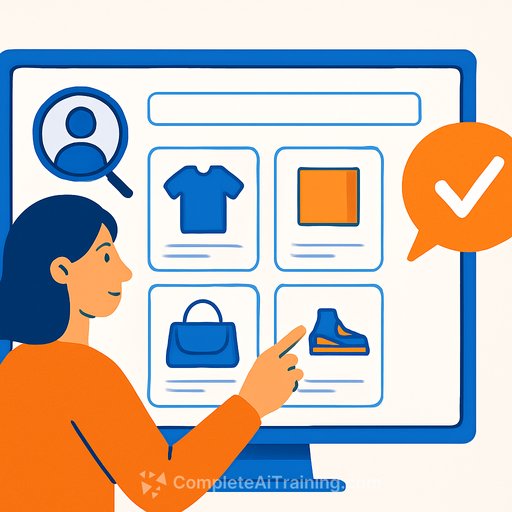Amazon's "Help me decide" brings precision to product recommendations
Amazon has shipped an AI-based assistant that turns browsing signals into clear product picks. For product teams, this is a blueprint for reducing decision fatigue, lifting conversion, and speeding buyers to a confident choice.
The feature reads intent across search, views, and past orders, then explains why a product fits. It's live in the U.S. on iOS, Android, and web.
What it does
- Personalized suggestions: Uses your on-site history to curate shortlists that actually match your shopping mission.
- Context awareness: Looks at related items you explored or bought to refine the pick.
- Price flexibility: Starts in your current range; on request, shows cheaper or pricier options without forcing a new search.
- Smart entry points: The "Help me decide" button appears after you've browsed many similar listings and under "Keep shopping for" on the homepage.
Tech behind the feature
Amazon pairs large language models with AWS services: Bedrock for generative apps, OpenSearch for retrieval, and SageMaker for recommendations. That mix lets the system score candidates and explain picks in plain language, like a helpful store associate rather than a spec dump.
For teams building similar flows, this looks like a hybrid of retrieval, ranking, and generation. Explanations are not an afterthought; they reduce uncertainty and nudge decisions.
How product orgs can apply this model
- Design for missions, not items: Move from "compare similar SKUs" to "solve the shopper's use case" (e.g., family camping, first apartment, starter studio).
- Trigger only when helpful: Fire the assistant after repeated lateral browsing, high pogo-sticking, or stalled dwell time.
- Explain, then recommend: Pair each pick with 1-2 sentences that tie features back to the shopper's recent behavior.
- Constrain the price band: Default to current range; offer one click to explore up/down shifts.
- Feedback loops: "Show me alternatives," "This isn't relevant," "Pin this" should feed the model and the session state.
- Cold start strategy: Use session signals and zero-party inputs (quick quiz) when history is thin.
- Multi-objective ranking: Balance match quality, price fit, delivery promise, and return risk.
- Privacy by design: Clear consent for data use, easy opt-out, and transparent explanations.
Implementation checklist
- Define 10-20 high-frequency shopping missions per top category.
- Map signals: queries, clicks, add/remove from cart, dwell, backtracks, and prior orders.
- Stand up a feature store with real-time updates; expire stale signals fast.
- Use retrieval (e.g., vector + keyword) to build candidate sets; re-rank with a session-aware model.
- Generate short rationales with a guardrailed LLM; never fabricate specs.
- Price band logic: hold range ±10% by default; expose quick toggles for budget and premium.
- UI: floating button on PLPs after N similar views; module in homepage "Keep shopping for."
- Guardrails: block unsafe categories, enforce policy filters, and attribute sources for claims.
- Experimentation: ship behind flags; run holdouts at session and user levels.
- Ops: cache explanations for top candidates; refresh on feedback events.
Metrics that matter
- Click rate on the assistant entry point
- Time to confident choice (minutes from first view to purchase or shortlist)
- Shortlist rate and shortlist-to-purchase conversion
- Return rate deltas by category and price band
- Average order value movement within the active price range
- Session-level "confidence" or "this helped" feedback score
- 28/90-day repeat rate and category depth
Amazon's broader toolset
"Help me decide" sits next to a growing suite: Rufus for product Q&A, AI shopping guides across 100+ categories, audio summaries of descriptions and reviews, and Lens Live for camera-based find-and-shop. Together, these reduce friction from discovery to checkout.
Competitive context
Google, OpenAI, and Perplexity are investing in similar assistants for shopping. Expect rapid improvements in multimodal input, richer rationales, and tighter price and delivery constraints across the stack.
What to build next week
- Ship a "Need help deciding?" button on PLPs after repeated lateral browsing.
- Start with a rules + retrieval + lightweight LLM explanation MVP before heavier models.
- Instrument a "show cheaper" and "show premium" toggle and track shift rates.
- Add a simple feedback trio: Helpful / Missed the mark / Show alternatives.
Level up your team
If you're planning a similar assistant, upskill your PMs and engineers on practical LLM workflows, retrieval, and guardrails. These resources can help.
Your membership also unlocks:






